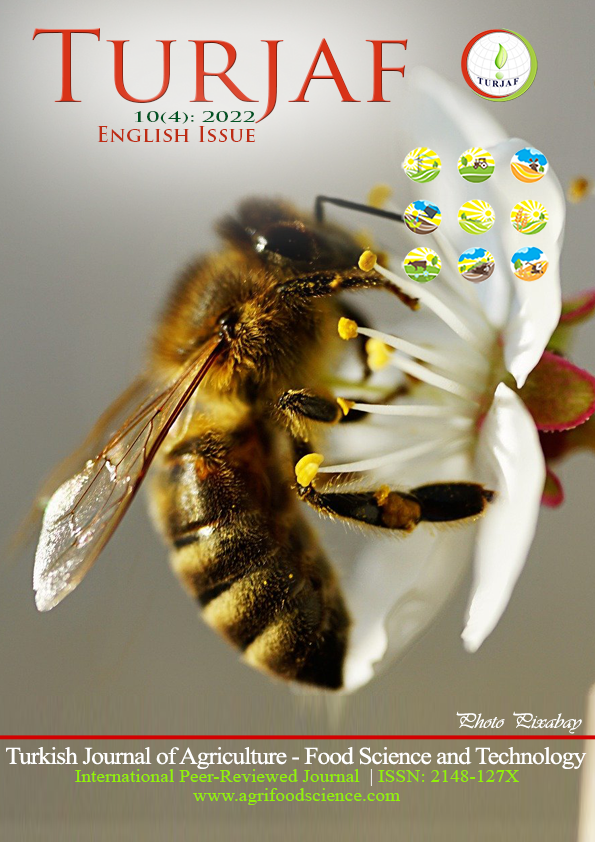Pathogenicity test of Sclerotium rolfsii isolates causing foot and root rot disease of betelvine (Piper betle L.)
DOI:
https://doi.org/10.24925/turjaf.v10i4.771-774.4520Keywords:
Betelvine, Pathogenicity, Sclerotium rolfsii, foot and root rotAbstract
The experiment was conducted under in-vivo condition in a betelvine baroj at Sher-e-Bangla Agricultural University (SAU), Dhaka-1207, Bangladesh. Nineteen isolates of Sclerotium rolfsii collected from different regions of Bangladesh designated as isolate-1 to isolate-19. Soil inoculated with S. rolfsii exhibited mycelial growth on the soil surface and around the base of the betelvine plant within 2-4 days after inoculation. Only 2 days after inoculation were required to manifest cottony colony on soil surface near root zone of inoculated betelvine plants by the isolate-3, 5, 7, 9 and 12. The first disease symptoms were observed within 6 to 16 days after inoculation where minimum days were required by the isolate-9 and maximum by the isolate-2 and 14. The highest lesion length (6.50 cm) was produced by the isolate-9 and isolate-13. All the isolates were found to be pathogenic in some cases, disease delayed due to their degree of pathogenicity. The isolate-9 showed highest disease incidence of 100% which was superior as compared to all other isolates at 15 days after inoculation. The isolate-19 showed least disease incidence of 66.66% even at 30 days after inoculation. Among the isolates, the most pathogenic one was isolate-9 collected from Kaligonj upazilla of Jhenaidah.Downloads
Published
30.04.2022
How to Cite
Rahman, M. H., Islam, M. R., Aminuzzaman, F. M., Das, K., Patwary, M. M. A., & Masud, M. Z. (2022). Pathogenicity test of Sclerotium rolfsii isolates causing foot and root rot disease of betelvine (Piper betle L.). Turkish Journal of Agriculture - Food Science and Technology, 10(4), 771–774. https://doi.org/10.24925/turjaf.v10i4.771-774.4520
Issue
Section
Research Paper
License
This work is licensed under a Creative Commons Attribution-NonCommercial 4.0 International License.

























